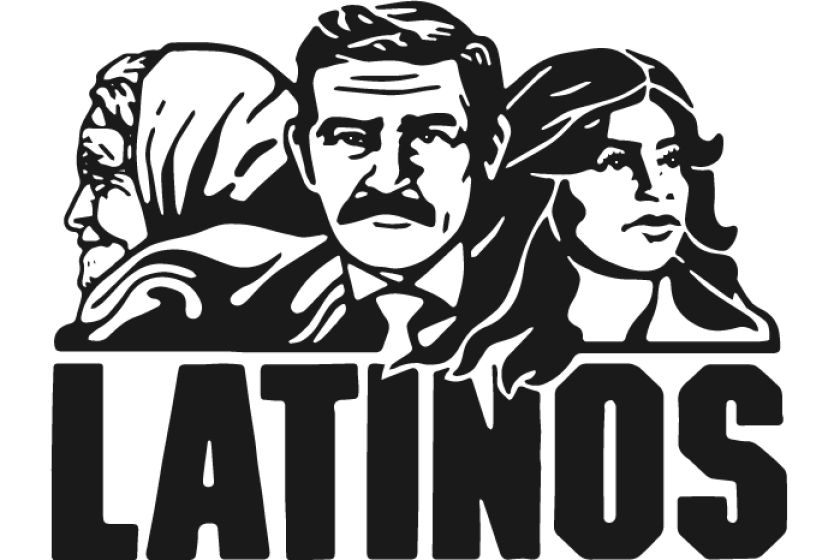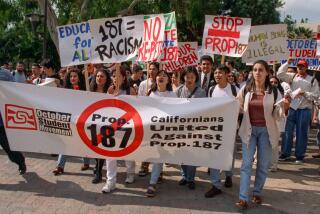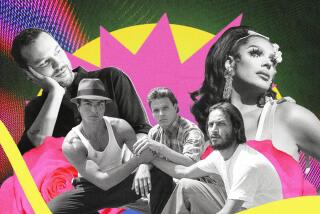Editorial: Of diversity and strength
Over the past three weeks The Times has published a series of articles about the Latino community in Southern California that was written, edited and illustrated by Latino journalists on this newspaper’s staff. The reason for this unique approach was the series’ special goal—to look at a diverse and growing community of almost 3 million people through the eyes of members of that community.
The concept was provocative, and so were some of the results. But the articles achieved their goal. All contributed to opening up a community that, despite being an integral part of the history and daily life of this area, too often is seen as mysterious or even threatening by the rest of Los Angeles. The Latino series clearly showed that this fearful attitude, the result of Anglo indifference rather than hostility, is mistaken.
The series also made it clear that Latinos are finally overcoming the discrimination that they have faced in the past and that are moving into the mainstream of life in this multi-racial society. Their progress has been steady, but there are still problems to be overcome. Some of the problems, like the tendency of many resident aliens from Mexico to resist becoming U.S. citizens, must be corrected by the Latino community itself. But others can be addressed by all of us.
An article by staff writer Virginia Escalante emphasized yet again the difficult life of Latinos who still make up the majority of the labor force in California’s rich agricultural industry. The article was made even more powerful by Escalante’s recollections of her youth in a family of migrant workers.
Things are better today for the state’s campesinos, she found, but still are not as good as they could be. Wages may be higher, but the work is still hard and seasonal. There is not enough decent housing. Dangerous pesticides are still a hazard that must be strictly controlled. And in the inevitable progress toward mechanization of field work, not enough attention has been paid to the future of workers who will be displaced.
Another article stressed the need for greater participation by Latinos in public life and in the US. political process. The expansion of the Voting Rights Act in 1975 to cover language minorities has proved as important to Latinos as the original act was to black Americans in the Deep South. It has provided the legal mechanisms to challenge gerrymandering, poll taxes and other discriminatory practices, and has created conditions in which more Latinos can freely vote and be elected to public office. The federal government must continue to enforce voting rights as energetically as possible, because the ability of any group to exercise political influence in this society is fundamental to social and economic progress.
But the most fundamental issue of all was dealt with by staff writer Robert Montemayor, who focused on the education system’s effect on young Latinos. Despite laudable efforts to help recently arrived children through bilingual education and other innovative programs, too many U.S.-born Latinos still drop out of school without getting high-school diplomas. The dropout rate for Latino students, which once exceeded 50% in Los Angeles area high schools, is down to about 40% nationally. That is an improvement, but still not good enough. Too many young Latinos are moving into an increasingly competitive economy unprepared for any but the most menial jobs. That represents a terrible waste of potential talent and brainpower, and the only remedy will be increased spending on public education and reforms to upgrade the quality of education offered in public schools.
As with the many other ethnic groups in American society, it is impossible and unfair to lump all Latinos into one category—social, political or otherwise. They are as different as is a Chicano whose family has been in this country for four generations from a Mexican worker who arrived in Los Angeles four days ago. As different as is a sprawling home suburban Hacienda Heights (“the Chicano Beverly Hills,” according to some) from a small, overcrowded apartment in the downtown barrio known as “Little Central America.” As different as football from soccer, or country-western music from the swaying rhythms of a bolero.
Different, yet all contributing to the diversity and strength of Los Angeles and the nation. Like every other ethnic group in American history, Latinos are being changed as they blend into the society around them, a process that can sometimes be painful. But, like those other ethnic groups, Latinos are making unique contributions to American life as they move into the mainstream. And, despite the fears of a few people on both sides, we remain convinced that the Latino community, and American society as a whole, will emerge even stronger and richer for the experience.
This story appeared in print before the digital era and was later added to our digital archive.
More to Read
Sign up for Essential California
The most important California stories and recommendations in your inbox every morning.
You may occasionally receive promotional content from the Los Angeles Times.







